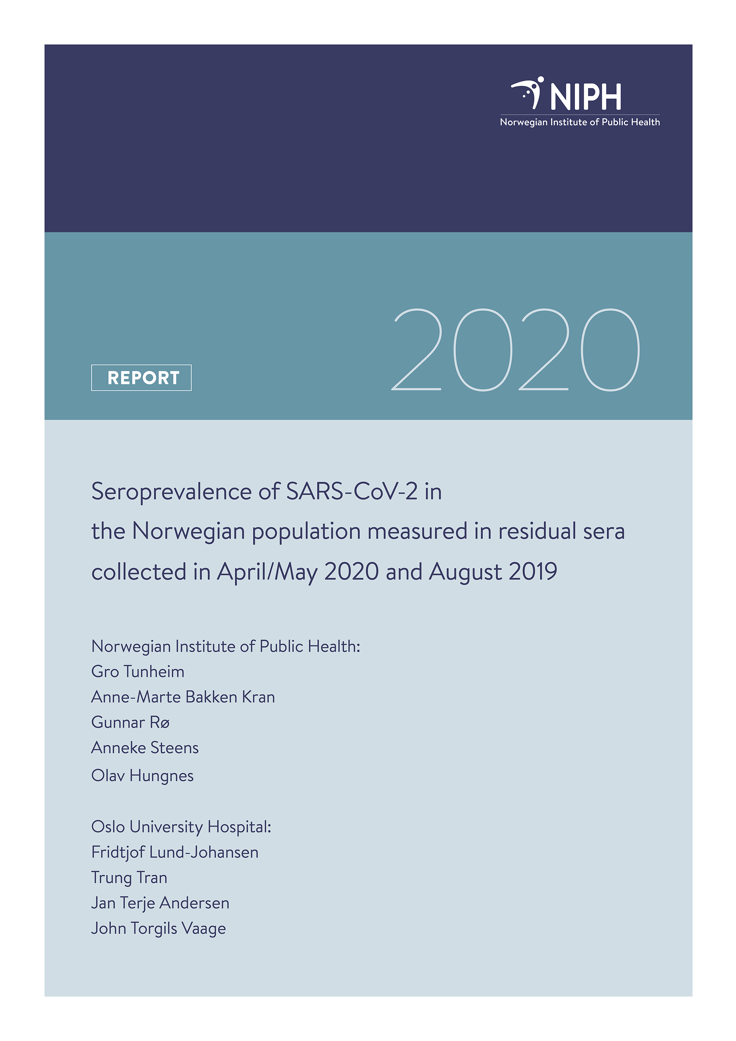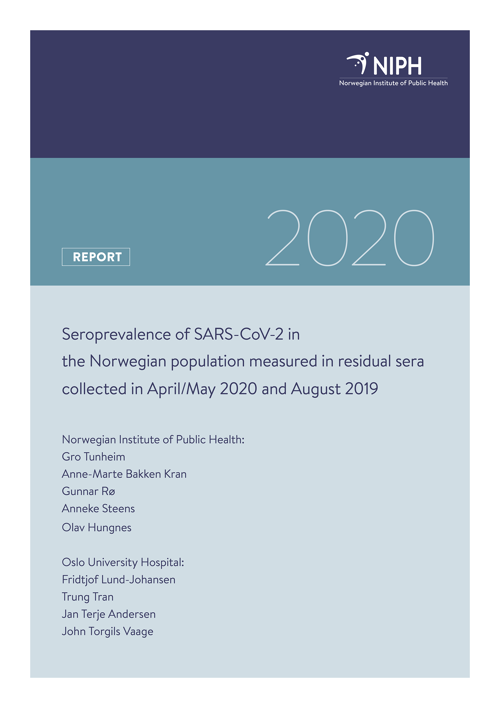Seroprevalence of SARS-CoV-2 in the Norwegian population measured in residual sera collected in April/May 2020 and August 2019
Report
|Published
This is the first study measuring antibodies against SARS-CoV-2 in serum samples collected systematically from various geographical regions in Norway and covering all age groups. A total of 900 residual sera from nine laboratories were sampled in week numbers 17-20, 2020, and tested for antibodies against SARS-CoV-2.
Summary
COVID-19 is an infectious disease caused by the novel coronavirus SARS-CoV-2. Infection with SARS-CoV-2 induces antibodies to the virus, therefore the presence of these antibodies in a person’s blood indicates that the person has been infected with SARS-CoV-2. This is the first study measuring antibodies against SARS-CoV-2 in serum samples collected systematically from various geographical regions in Norway and covering all age groups. A total of 900 residual sera from nine laboratories were sampled in week numbers 17-20, 2020, and tested for antibodies against SARS-CoV-2 using a novel in-house assay established at the Department of Immunology, Oslo University Hospital. Based on these measurements, the estimated seroprevalence in the Norwegian population is probably close to 1% (1.0% (95% credible interval 0.1% - 2.4%)). We did not find any differences in seroprevalence by gender or age group. However, there seem to be geographical differences in the prevalence of seropositive individuals; there was a non-significant trend indicating that the number of positive samples and the estimated seroprevalence was higher in Oslo than in other regions. However, the sample size was limited as not all counties were included, and only an average number of 100 samples have been collected from each laboratory. Therefore, these results should be interpreted with caution. Follow-up studies of antibodies against SARS-CoV-2 in future collections of residual sera can provide further information about the development of the COVID-19 pandemic in Norway.

